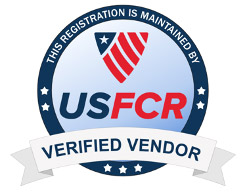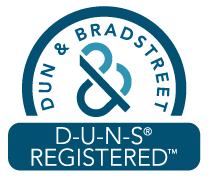THRIFT SAVINGS PLAN (TSP)
The Thrift Savings Plan (“TSP”) is a retirement saving and investment plan for Federal employees and members of the uniformed services, including the Ready Reserve. It was established by Congress in the Federal Employees’ Retirement System Act of 1986 and offers the same types of savings and tax benefits that many private corporations offer their employees under 401(k) plans. The TSP is a defined contribution plan, meaning that the retirement income you receive from your TSP account will depend on how much you (and your agency, if you are eligible to receive agency contributions) put into your account during your working years and the earnings accumulated over that time.
TRADITIONAL and ROTH TSP PLAN OPTIONS
The TSP now offers participants the opportunity to contribute to a Traditional TSP or a Roth TSP. The difference is how the funds are taxed. Traditional contributions are tax deductible, and give the participant a break today. The funds grow tax-deferred until they are withdrawn at retirement age, at which time they are taxed.
A Roth plan works the opposite way. Contributions are made after the money has been taxed, contributions grow tax free, and are withdrawn tax free at retirement age. There are benefits to both plans, so be sure to research which is best for your situation.
The Thrift Savings Plan has 5 main fund options one can invest in. They are all based on index funds. Index funds are an easy and low-cost way to buy stocks that track a market sector. There is also a 6th fund, the “L Fund,” or Lifecycle Fund, which is a fund comprised of the 5 main funds and allocated for a target retirement date.
THRIFT SAVINGS PLAN INVESTMENT OPTIONS
Here is a listing of the funds available through the TSP:
- G Fund: The G Fund is invested in short-term U.S. Treasury securities specially issued to the TSP. Payment of principal and interest is guaranteed by the U.S. Government. Thus, there is no credit risk. The G Fund offers the opportunity to earn rates of interest similar to those of long-term Government securities but without any risk of loss of principal and very little volatility of earnings.
- F Fund: The objective of the F Fund is to match the performance of the Lehman Brothers U.S. Aggregate (LBA) Index, a broad index representing the U.S. bond market. The F Fund offers the opportunity to earn rates of return that exceed those of money market funds over the long term (particularly during periods of declining interest rates), with relatively low risk.
- C Fund: The objective of the C Fund is to match the performance of the Standard and Poor’s 500 (S&P 500) Index, a broad market index made up of stocks of 500 large to medium-sized U.S. companies. The C Fund offers the opportunity to earn a potentially high investment return over the long term from a broadly diversified portfolio of stocks of large and medium-sized U.S. companies.
- S Fund: The objective of the S Fund is to match the performance of the Dow Jones Wilshire 4500 Completion (DJW 4500) Index, a broad market index made up of stocks of U.S. companies not included in the S&P 500 Index. The S Fund offers the opportunity to earn a potentially high investment return over the long term by investing in the stocks of small and medium-sized U.S. companies.
- I Fund: The objective of the I Fund is to match the performance of the Morgan Stanley Capital International EAFE (Europe, Australasia, Far East) Index. The I Fund offers the opportunity to earn a potentially high investment return over the long term by investing in the stocks of companies in developed countries outside the United States.
- L Fund: The Lifecycle Funds diversify participant accounts among the G, F, C, S, and I Funds, using professionally determined investment mixes (allocations) that are tailored to different time horizons. The L Funds are rebalanced to their target allocations each business day. The investment mix of each fund adjusts quarterly to more conservative investments as the fund’s time horizon shortens. There are 5 different Lifecycle Funds targeting retirement dates through 2050.
A couple of things to consider when looking at your TSP funds:
- If you annuitize with the government and want your payments to continue for life- you can never change the amount you are receiving. This is a big factor that is not the case in most private companies.
- Your TSP annuity if you elect it with the government will be paid through Metropolitan Life (a private company).
- In a lot of cases, federal employees are paying 30% and higher taxes on their TSP funds and can cause shortfalls in retirement. There are other ways available to you that minimize the taxes and allow you to use more of your money in retirement.
- If you are contributing more than the 5% the government matches, it is normally a good practice to look for other investment vehicles that you can access tax-free and consider moving some of those contributions over 5% into those tax-free areas.
Your TSP is probably one of your biggest pieces of your retirement picture. The safest thing for you to do is use the expertise of people who know your options and can explain to you in detail how each of those options work. With the right information, you can make the right decisions.
DISCLAIMER
The Thrift Savings Plan is a retirement savings and investment plan authorized by the United States Congress in the Federal Employees’ Retirement System Act of 1986. The Thrift Savings Plan is administered by the United States Government agency, the Federal Retirement Thrift Investment Board.
Neither fers-employees.com nor any of its partners or representatives is in anyway affiliated with the United States Government, The Federal Retirement Thrift Investment Board or the Thrift Savings Plan, and that the service being offered is not sanctioned by the United States Government, the Federal Retirement Thrift Investment Board or the Thrift Savings Plan.





